1.
A. 0.0230102301
B. 0.023023
Answer:
1.
r = 5
s = 2
A. r - 2s + 2
B. rs/6
Answer:
2. A purchase plan for a stereo receiver requires 20 percent of the total cost as a down payment and monthly payments of $30.
A. The total cost of the stereo receiver
B. $450
Answer:
2. 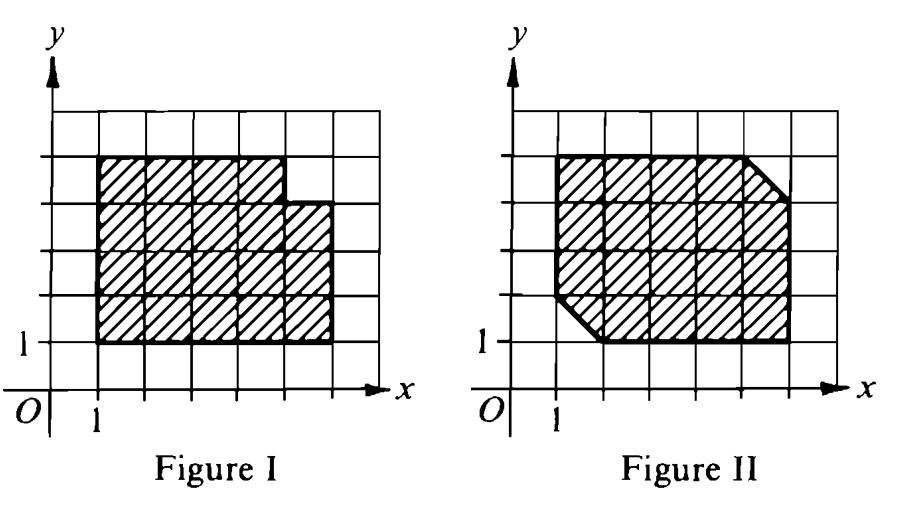
A. The area of the shaded region shown in Figure I
B. The area of the shaded region shown in Figure II
Answer:
3. ΔPQR is inscribed in a circle.
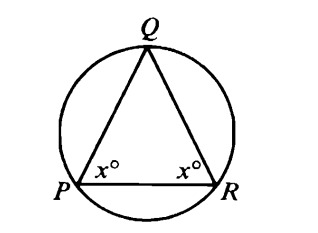
A. PQ
B. QR
Answer:
3. Lila purchased a hat and a scarf for a total of $40. She received a 25 percent discount on the price of the scarf and a 15 percent discount on the price of the hat.
A. The amount Lila saved on the scarf
B. The amount Lila saved on the hat
Answer:
4.
m + 2 = 8
r - 2 = 7
A. 4[(m + 2) + (r - 2)]
B. (m + 2)(r - 2)
Answer:
4.
A. (25% of 12) + 8
B. 25% of (12 + 8)
Answer:
5.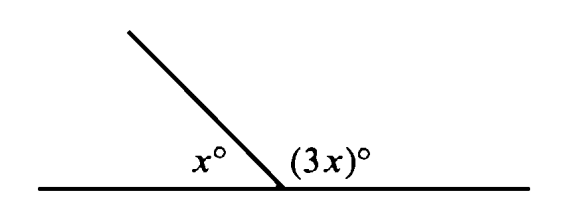
A. 4x
B. 179
Answer:
5. 
A. x²
B. y²
Answer:
6.
A. √82,531
B. 300
Answer:
6. x ≠ 0
A. x
B. 1/x
Answer:
7. 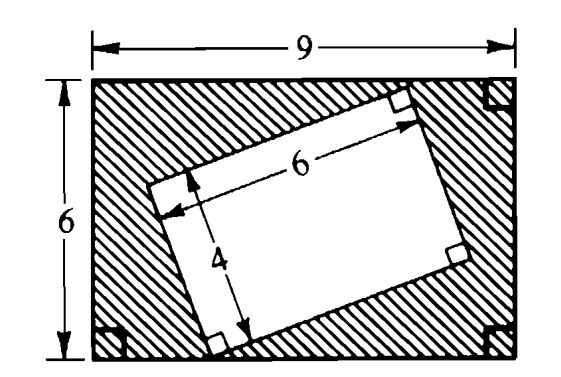
A. The area of the shaded region
B. 30
Answer:
7.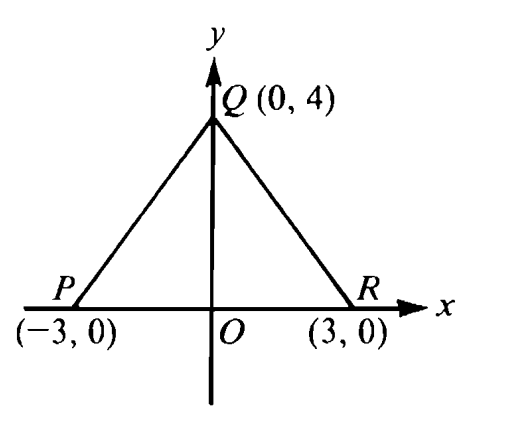
A. The perimeter of triangle PQR
B. 18
Answer:
8.
A. 1/4 + 1/5
B. 1/3 + 1/7
Answer:
8. x is a positive integer
A. (-1)²ˣ
B. (-1)²ˣ ⁺ ¹
Answer:
9. On a 50-question multiple-choice test, 3 points were given for each question answered correctly and 1 point was deducted for each question answered incorrectly. A student who answered all of the questions on the test received a total of 98 points.
A. The number of questions on the test that the student answered incorrectly
B. 14
Answer:
9.
A. The greatest integer x such that 7x < 49
B. The least integer y such that 6y > 30
Answer:
10.
A. (0.4)³
B. (0.2)⁶
Answer:
10.
A. The average (arithmetic mean) of x + 5, 2x + 3, and 1 - 3x
B. The average (arithmetic mean) of 5, 2, 8, 6, and 4
Answer:
11.
3 ≤ x ≤ 5
6 ≤ y ≤ 10
A. The average (arithmetic mean) of x and y
B. 5
Answer:
11. 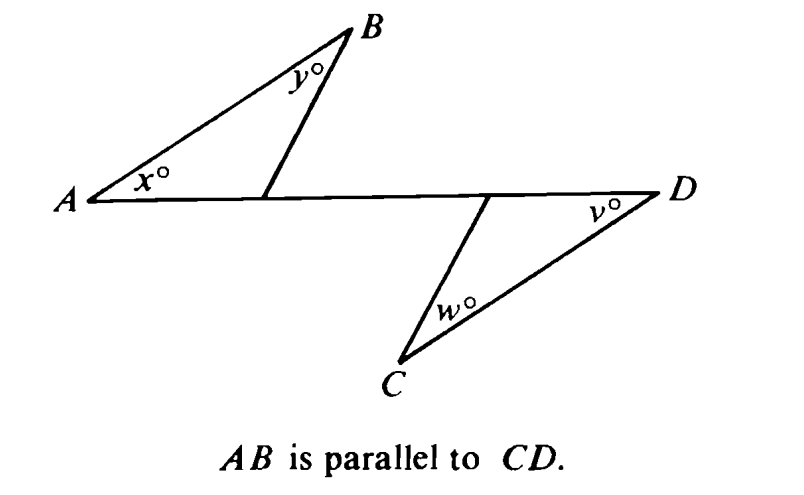 AB is parallel to CD
AB is parallel to CD
A. x + y
B. w + v
Answer:
12.
A. The length of a diagonal of a square with side length s
B. The length of a diameter of a circle with radius s
Answer:
12.
A. √2 + √10
B. √6 + √6
Answer:
13. The sum of the three numbers in the horizontal row equals the sum of the three numbers in the vertical column.
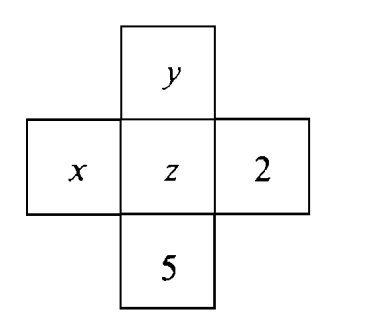
A. x
B. y
Answer:
13. A rectangular floor with an area of 12 square meters is drawn to scale with 2 centimeters representing 1 meter.
A. The area of the scale drawing of the floor
B. 24 square centimeters
Answer:
14. 
A. The area of triangular region RUV plus the area of triangular region RST
B. The area of triangular region RPQ
Answer:
14. A deck of n cards contains exactly k marked cards. (k ≠ 0)
A. The ratio of the number of unmarked cards in the deck to the number of marked cards in the deck
B. n/k - 1
Answer:
15.
A. 2x + 1
B. x - 1
Answer:
15.
A. 2⁵ ⋅ 5⁶
B. 5(10⁵)
Answer:
16. If 3x + 5 = 2x + 10, then x =
Answer:
16. If 1/4 of a certain number is 2, then 1/2 of the number is
Answer:
17. 1/3 + 1/3 equals how many twelfths?
Answer:
17. 2.34 - 2⅕ =
Answer:
18. Of the 400 cadets in a graduating class, 30 percent were women and, of these, 1/5 became instructors. If the number of men who became instructors was twice the number of women who became instructors, how many of the men became instructors?
Answer:
18. If n - 6/11 = 5/11, then n =
Answer:
19. Of the following fractions, which has the least value?
Answer:
19. The charge for a telephone call made at 10:00 a.m. from City Y to City X is $0.50 for the first minute and $0.34 for each additional minute. At these rates, what is the difference between the total cost of three 5-minute calls and the cost of one 15-minute call?
Answer:
20. If ΔPQR and ΔPRS below are equilateral, what fraction of PQRS is shaded?
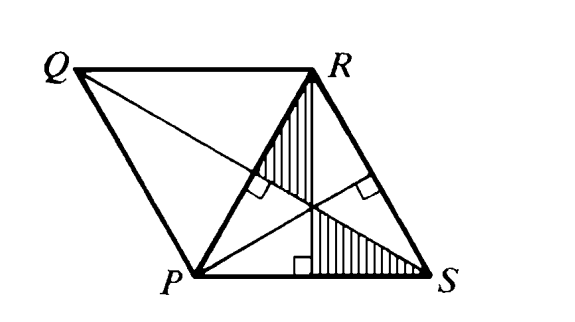
Answer:
20. The lengths of the sides of a triangle are in the ratio of 3 to 5 to 6. If the perimeter of the triangle is 70, what is the length of the longest side?
Answer:
21. What is the average total amount of sales made on a Friday for Store X?
Answer:
21. Approximately what percent of state and local government employees were male?
Answer:
22. On the average, what is the total amount of sales per week (Monday through Saturday) for Store X?
Answer:
22. State and local governments employed approximately how many more office/clerical employees than skilled craft employees?
Answer:
23. What is the average amount of a sale made on a Wednesday for Store X?
Answer:
23. For state and local government employees, the median annual salary for males was approximately what percent greater than that for females?
Answer:
24. On which of the following days is the average amount of a sale greatest for Store X?
Answer:
24. For state and local government employees, approximately what was the difference between the number of females employed as professionals and the number of females employed in service/maintenance occupations?
Answer:
25. During the first week of a certain month, how many more sales were made in Store X on Saturday than on Monday?
Answer:
25. Which of the following statements about state and local government employees can be inferred from the data?
I. Fewer than 1/3 of those in paraprofessional occupations were males.
II. There were more than 5 times the number of females in the technical occupations as in the skilled craft occupations.
III. There were more than 6 times the number of females in the professional occupations as in the official/administrative occupations.
Answer:
26. A train travels from City X to City Y in 3 hours and 30 minutes at an average speed of 60 miles per hour. If the train returns at an average speed of 50 miles per hour, how long does the return trip take?
Answer:
26. On the number line below, what number corresponds to a point that is 2/5 of the distance from 10 to 40?

Answer:
27. In the figure below, if point T is 6 centimeters from every point on arc PQ and from every point on arc RS, what is the sum of the areas, in square centimeters, of regions PQT and TRS?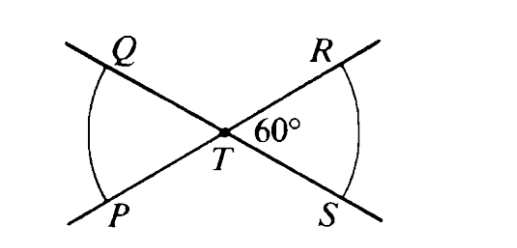
Answer:
27. If polygon ABCDE below has perimeter 26 and equilateral triangle BCD has perimeter 18, what is the area of rectangular region ABDE?

Answer:
28. Which of the following symbols should be substituted for □ to make both of the statements above true for all integers n such that -2 < n ≤ 3
4-n□6
4-n□5
Answer:
28. Which of the following expressions has (have) the same value for n = 5 as for n = 1/5?
I. n + 1/n
II. n - 1/n
III. n/(1/n)
Answer:
29. ((8√2 - 4)/4)² =
Answer:
29. The figure below shows the path traced by the end of a pendulum as it moves from point X to point Y. How many centimeters does the end of the pendulum travel along the arc from X to Y?
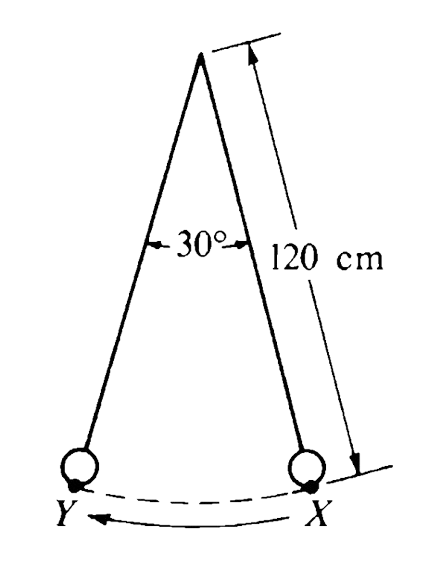
Answer:
30. In the figure below, (a + b + c)/(s + t + u) =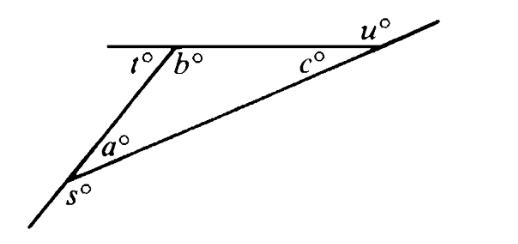
Answer:
30. If p = 2/3 and r = 4, then (p√3)ʳ - (p + 1/9) =
Answer: